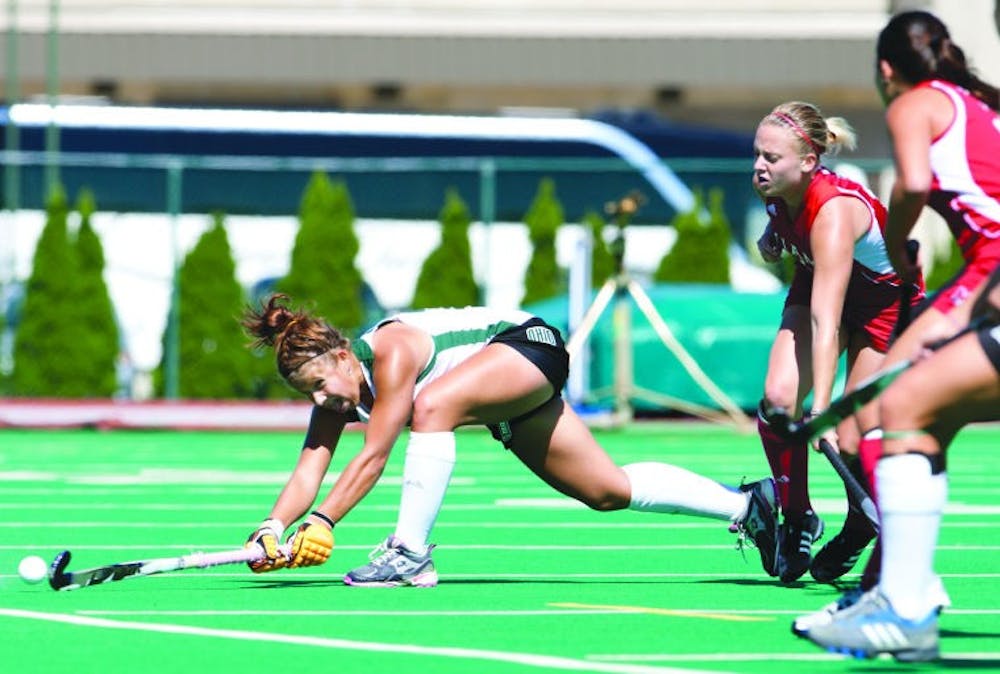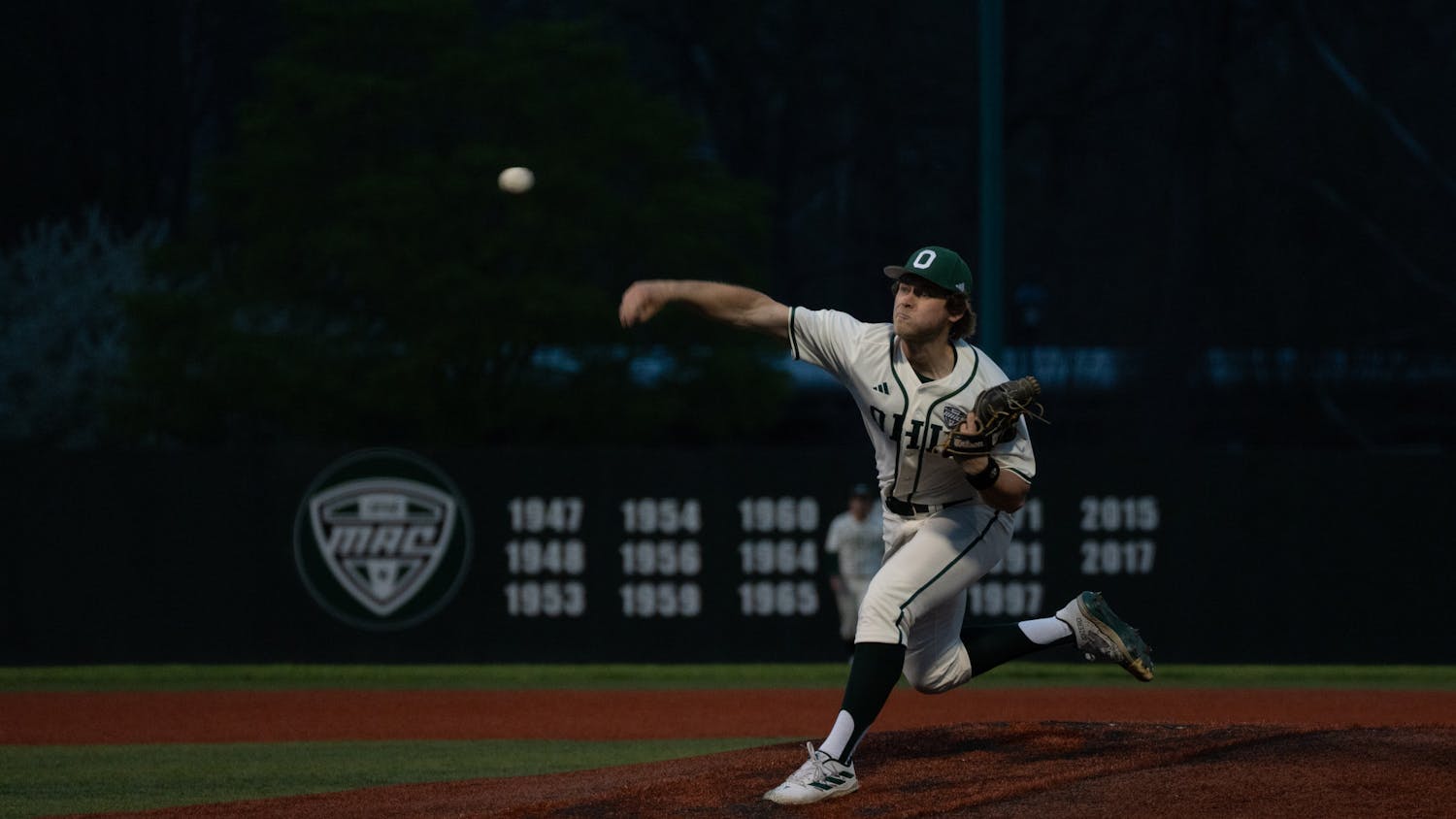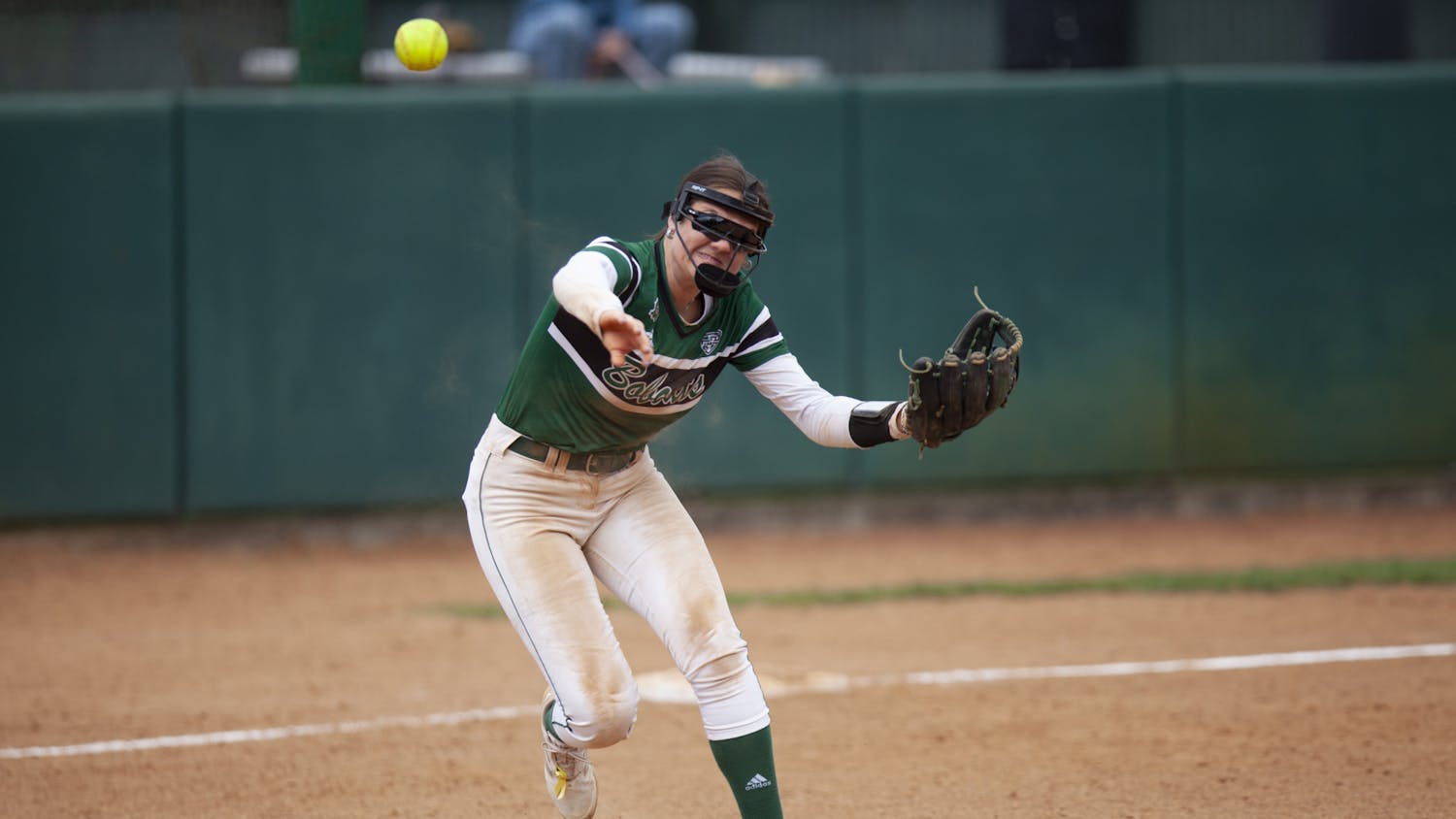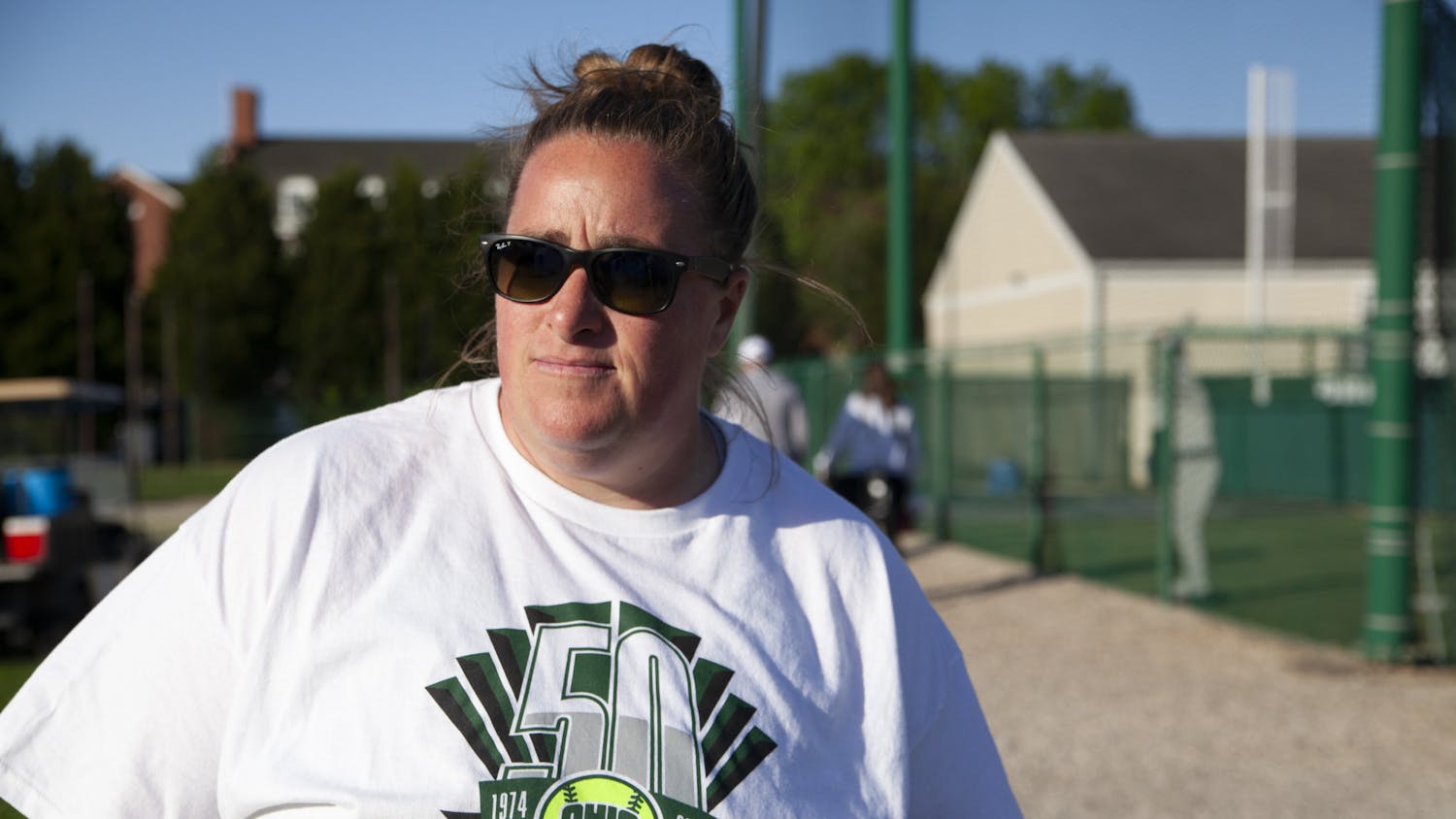Ice hockey has its power play. Field hockey has its penalty corner.
Both aspects of play come as a result of a foul by one team, giving the opposite team a player advantage and a better chance to put the puck or ball in the net.
Through eight games this season, the Bobcats (6-2) have received 59 corners, compared to only 35 allowed to their opponents.
Ohio has manufactured 12 of its 23 goals this season off those attempts, a total that coach Neil Macmillan said is unusually high.
“We’ve been executing on corners very well this year,” Macmillan said. “We’re a little too heavy; we need to score some more open-field goals, I think, to balance it out.”
At the time a corner is set to begin, six of the regular 10 defenders are sent to the opposite side of the field. The remaining four join the goalie in the net, and all 10 can move only once an offensive player injects the ball into play.
At the moment of injection, which somewhat resembles soccer’s throw-in, nearly everyone on the field jumps into action.
The four defenders along the line hurry to different positions around the goal, hoping to aid the keeper against the onslaught that is sure to follow.
At the same time, the six defenders in exile across midfield sprint toward the play, but they are unlikely to have any bearing on what will happen.
The offense will attempt one of more than a dozen plays, but the ball must be injected, or dragged out, before that can happen.
All season long, it has been Jessica Jue’s responsibility to initiate the Bobcats’ corner attack, a job that she enjoys.
“Accuracy is key,” said Jue, who leads the team with seven assists. “If you don’t get it in on target, then the whole corner breaks down.”
Macmillan said Jue’s injections usually take about 1.2 seconds, but anything faster than 1.4 seconds is acceptable.
“So (it is) pretty much just getting it there as fast as you can, on target, and then moving on from there,” Jue said.
So far, it has normally been Laura Mastro’s job to stop Jue’s injection for the shooter, and both players will be credited with an assist if a goal is scored immediately afterward.
Several of Ohio’s players have taken shots off penalty corners this year, but the most talented of that bunch might be Cathryn Altdoerffer. Her specialty is a move called the drag flick, which she has used on her way to scoring five goals, tied for tops on the team.
“It’s a nice skill to have,” Altdoerffer said, “because it’s something, I feel, that gives our whole team an edge. We have something that other teams don’t.
“It’s just a really strong, straight shot. And if it’s strong enough, it’s going to go in.”
Altdoerffer has enjoyed a high conversion rate on corners this year, and her coach speculated that only one or two other women in the Mid-American Conference can execute a drag flick the way she can.
“But I haven’t seen it as a threat,” Macmillan said.
If the initial shot does not cross the line, an opportunistic team might have the chance to bang a rebound into the net.
That aspect of field hockey calls to mind comparisons of its ice hockey counterpart, as does the fact that a foul by one team will result in a player advantage for the other. But the penalties themselves might be where the sports differ most, seeing as how much less violent women’s field hockey is than men’s ice hockey.
“It’s not something where you try to take someone’s head off,” Macmillan said, “or you drag someone down from behind on a fast break.”
me811508@ohiou.edu






